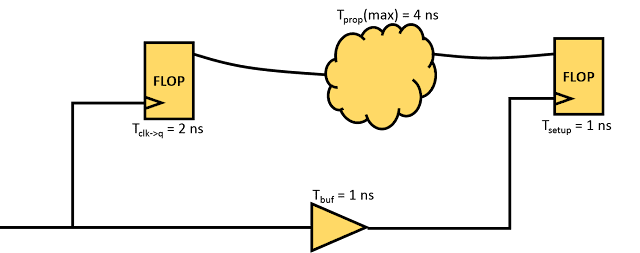We can build a 2-input XOR gate using 5 NAND gates. Sound interesting, isn't it? Let us see how.
As we know, the logical equation of a 2-input XOR gate is given as below:
m + n = (m'n')'
Taking this into account,
As we know, the logical equation of a 2-input XOR gate is given as below:
Y = A (xor) B = (A' B + A B')Let us take an approach where we consider A and A' as different variables for now (optimizations related to this, if any, will consider later). Thus, the logic equation, now, becomes:
Y = (CB + A D) ----- (i)
where
C = A' and D = B'De-Morgan's law states that
m + n = (m'n')'
Taking this into account,
Y = ((CB)'(AD)')' = ((A' B)' (A B')')'
Thus, Y is equal to ((A' nand B) nand (A nand B')). No further optimizations to the logic seem possible to this logic. Figure 1 below shows the implementation of XOR gate using 2-input NAND gates.
 |
| Figure 1: 2-input XOR gate implementation using 2-input NAND gate |
Thus, we have seen an XOR gate can be implemented by putting NAND gates in cascade. Can you think of a better way of implementing XOR gate using NAND gates?
Also read:
Also read:
